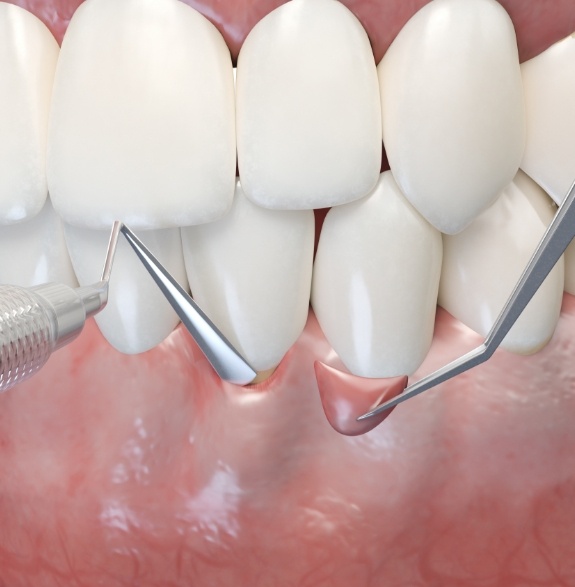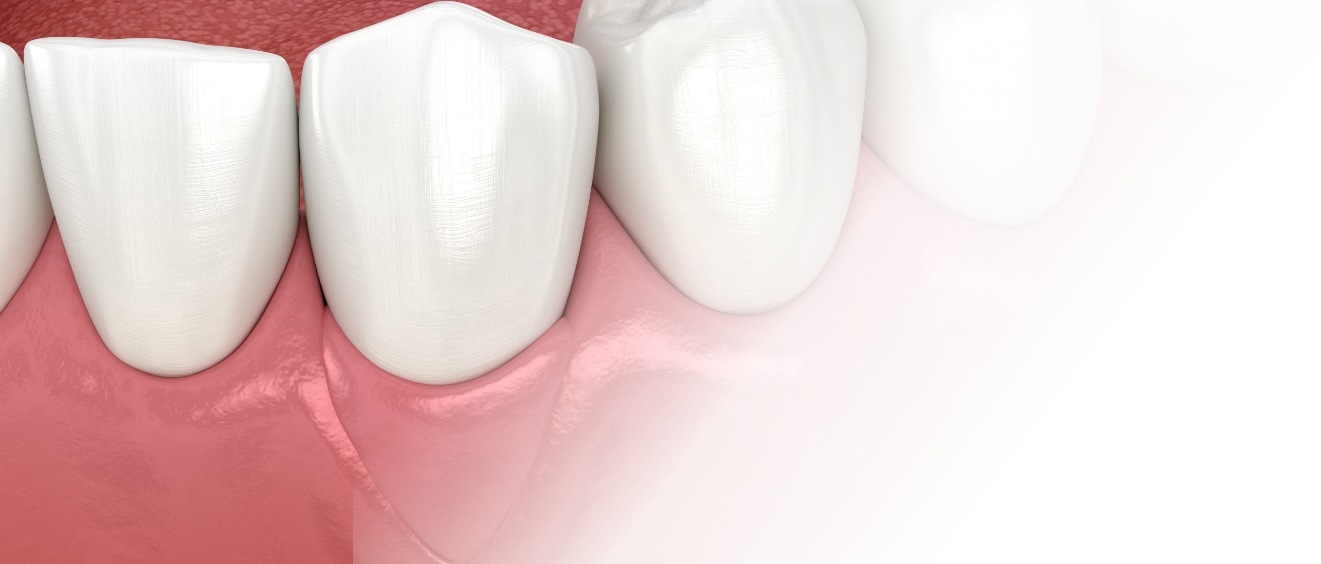Soft Tissue Grafting Vista
A Trusted Way to Repair Receded Gums
How has periodontal disease changed your smile? For those with advanced periodontitis, one of the changes that can happen is gum recession. As the gums recede, more of the teeth are exposed, including portions of their roots.
When the tooth roots are exposed, you can experience greater sensitivity and an increased risk of developing cavities on the root of the tooth. Receding gums can also make you feel more self-conscious about how your smile looks. Thankfully, if your smile is affected by gum recession, Dr. Farhoumand can restore the lost tissue with a special procedure known as soft tissue grafting.
Why Choose Bita Farhoumand, DDS for Soft Tissue Grafting?
- Experienced Board-Certified Periodontist & Implantologist
- Gum Grafting & Regeneration Treatments Available
- Periodontal Procedures to Protect & Repair the Smile
What Happens During a Soft Tissue Graft?

There are multiple different types of soft tissue grafting procedures. The one Dr. Farhoumand will recommend for you will depend on the unique progression of your condition as well as your oral health needs:
- Connective Tissue Grafts: These are the most common types of gum grafts patients receive and involve removing tissue from the roof of the mouth to apply to affected areas of the gumline. The graft will be stitched to the gumline surrounding teeth that have exposed roots, allowing it to healthily integrate with the existing tissue.
- Free Gingival Grafts: This type of graft is similar to a connective tissue graft, as it also involves tissue being grafted from the palate to be added to the gumline to address recession. However, free gingival grafts are often recommended for patients with less damage, as it requires a smaller amount of tissue from the donor site and provides more precise enhancement results.
- Pedicle Grafts: Finally, pedical grafts involve moving a small amount of healthy gum tissue to a section of the mouth that requires additional support, meaning no tissue will be removed from the roof of the mouth.
 (760) 470-4664
(760) 470-4664




